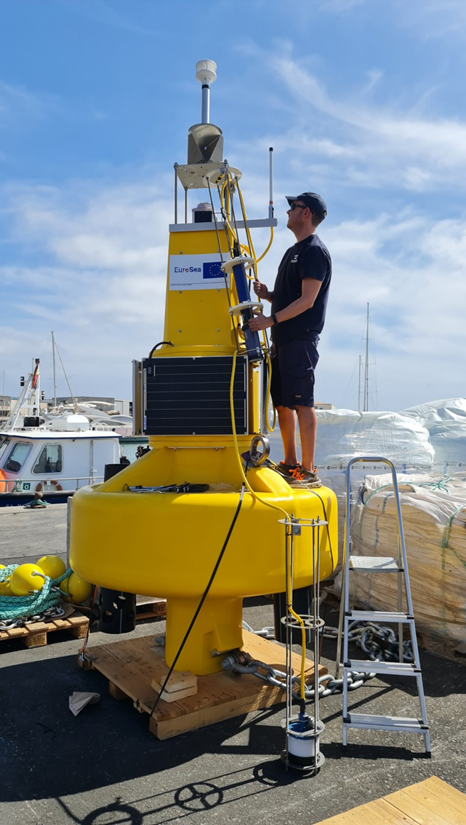
Description
The introduction of two in-situ buoys equipped to measure temperature/salinity (T/S), dissolved oxygen (DO), pH, and currents represents a significant enhancement in marine monitoring infrastructure. Additionally, these buoys come with the capability to provide real-time and near-time predictions.
Impact During the Project
Enhanced Data Delivery:
Traditional State: Previous monitoring systems might have had delays in data relay or might not have been as comprehensive in their data coverage.
Advancement: These buoys offer new and improved delivery of both physical and biogeochemical (BGC) data. This timely and enriched data stream is integrated into the European Ocean Observing System (EOOS) and is also made available in real-time to co-developers in Ireland and the Mediterranean.
Real-time and Predictive Capabilities:
Traditional State: Earlier marine monitoring systems might have only provided historical data without real-time insights or predictive features.
Advancement: With these advanced buoys, stakeholders not only receive real-time data but also benefit from near-time predictions, offering them a glimpse into potential immediate future marine conditions.
Impact Post Project
Sustained and Reliable Data Delivery:
Traditional State: Long-term delivery of in-situ data might have faced interruptions or inconsistencies with earlier monitoring systems.
Advancement: These buoys are geared to offer a sustained flow of in-situ data to EOOS and other co-developers, ensuring that marine monitoring remains consistent and reliable over time.
Improved Response to Marine Events:
Traditional State: The ability to react to extreme marine events was often hindered by a lack of real-time data and predictive insights.
Advancement: With real-time and predictive data now available, co-developers and marine stakeholders can significantly improve their responsiveness to extreme marine events, thereby mitigating potential risks and optimizing marine operations.
Advancement over and above State of the Art
The deployment of these technologically advanced in-situ buoys marks a notable progression in marine monitoring capabilities. By offering real-time data combined with predictive insights, these buoys transform the way marine stakeholders approach oceanographic conditions. Immediate access to data and predictive features means marine operations can be optimized, risks can be minimized, and there’s an overall enhancement in the way the marine environment is understood and interacted with. Beyond just monitoring, these buoys promise a more proactive approach to marine events, representing a significant leap over traditional marine monitoring systems.
Links and References
Link to D5.9 – Operational monitoring systems available at the three sites: https://eurosea.eu/download/eurosea_d5-9_operational_monitoring_systems_available_at_the_three_sites/?wpdmdl=5646&refresh=650197cad49c41694603210
